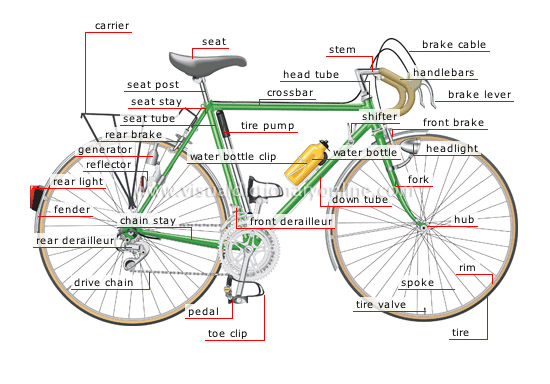Bicycle Components: The Building Blocks of a Smooth and Efficient Ride
Bicycles have been around for over two centuries, providing a simple and efficient means of transportation and exercise. Over time, bicycles have evolved from simple designs to complex, high-performance machines. One of the key factors that have contributed to the evolution of bicycles is the development of high-quality bicycle components.
Bicycle components refer to the individual parts that make up a bicycle, such as the frame, wheels, pedals, brakes, gears, and handlebars. Each of these components plays a critical role in determining the performance, comfort, and durability of a bicycle.
Frame
The frame is the foundation of a bicycle and provides the structure to which all other components are attached. Frames are typically made from materials such as aluminum, carbon fiber, steel, or titanium, each offering unique benefits in terms of weight, stiffness, and durability.
Wheels
Wheels are an essential component of a bicycle, providing support and allowing the rider to move forward. The quality of the wheels can significantly impact the performance of the bike, with factors such as weight, aerodynamics, and stiffness being critical considerations.
Pedals
Pedals are the component that allows the rider to apply force to the bike, propelling it forward. Pedals come in a variety of designs, including clipless and flat pedals, each offering unique benefits in terms of power transfer and comfort.
Brakes
Brakes are a crucial component of a bicycle, providing the ability to slow down or stop the bike when necessary. Different types of brakes are available, including rim brakes and disc brakes, each offering unique benefits in terms of stopping power and modulation.
Gears
Gears are the component that allows the rider to adjust the resistance and speed of the bike, making it easier to ride uphill or faster on flat terrain. Gears come in a variety of designs, including derailleurs and hub gears, each offering unique benefits in terms of weight, simplicity, and range.
Handlebars
Handlebars are the component that allows the rider to steer and control the bike. Handlebars come in a variety of designs, including flat, riser, drop, and aero bars, each offering unique benefits in terms of comfort, control, and aerodynamics.
Market Growth and Trends
The global market for bicycle components is expected to grow significantly over the next few years, driven by factors such as the increasing popularity of cycling as a means of transportation and exercise, the growing demand for high-performance and sustainable bicycles, and the development of innovative materials and technologies.
In addition, the increasing focus on sustainability and eco-friendliness is driving the demand for lightweight and durable components made from materials such as carbon fiber and recycled metals.
Conclusion
Bicycle components are the building blocks of a smooth and efficient ride, with each component playing a critical role in determining the performance, comfort, and durability of a bicycle. As the demand for high-quality and sustainable bicycles continues to grow, the market for bicycle components is expected to expand, with innovative materials and technologies being developed to enhance the performance and sustainability of these critical components.


